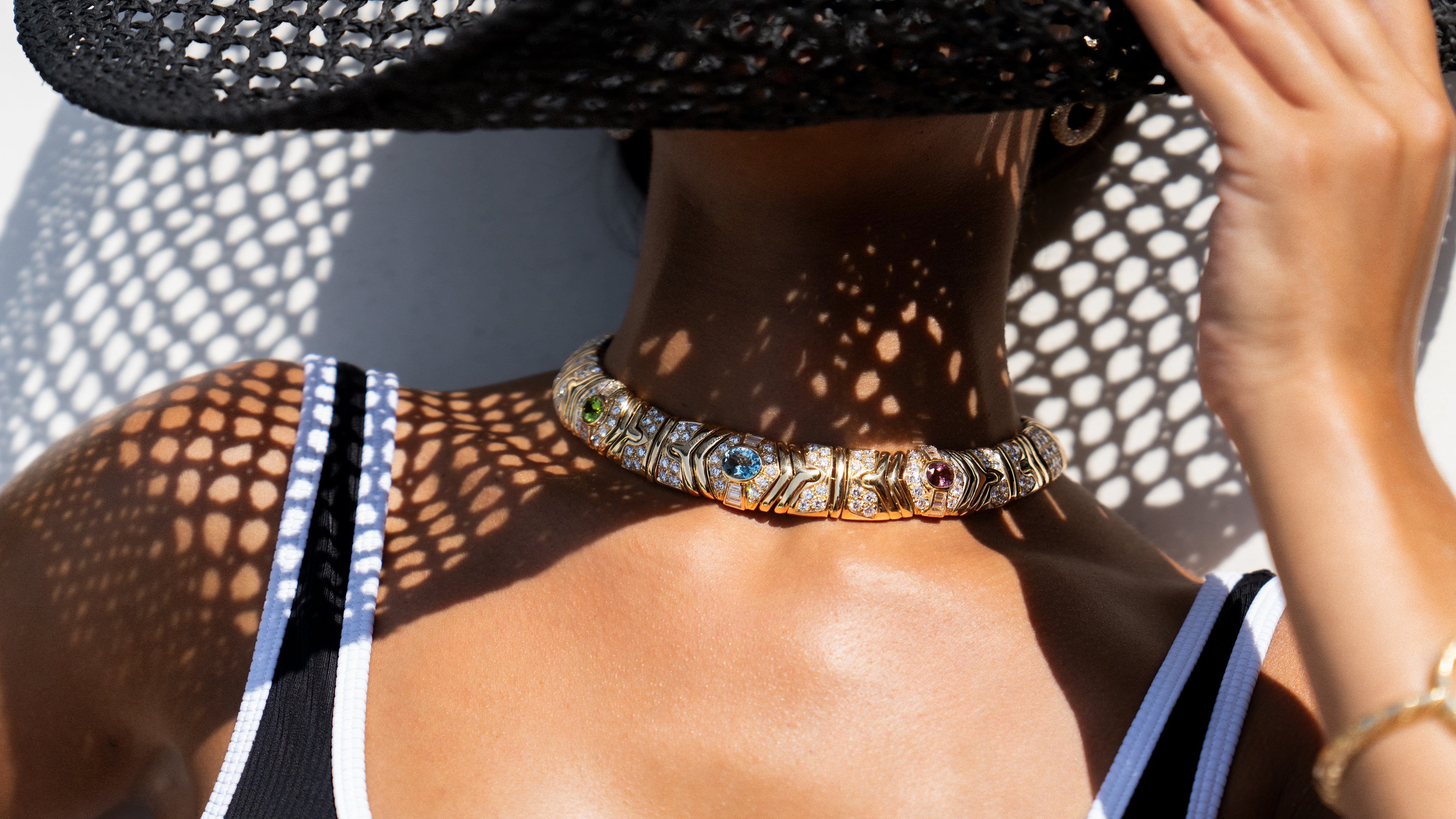Ambaji Shinde
Harry Winston called him the “jewel behind the jewel.” Humble to the end, Ambaji Shinde was a master of his craft, creating jewelry that has adorned royalty and celebrities around the world.
It Began in India
Ambaji Venkatesh Shinde was born in 1917 in Mapusa, a fishing village in Goa, a Portuguese colony located in India. As a child, Ambaji took an interest in theatre and decorative arts. Although his parents were not pleased with their son’s pursuit of art, a teacher persuaded Ambaji’s parents to send him to Bombay to study at the Sir J.J. School of Art in 1934.
Three years later, Shinde received his diploma as a textile artist and designer. The death of his father forced Shinde to take on the role as head of the family, obliging the young designer to seek employment. Working in the textile industry was not appealing; instead, Shinde got a job as a jewelry designer to one of the biggest jewelry firms in Bombay, Narauttam Bhau Jhaveri.
The young artist continued to hone his skills. In 1938, Shinde was charged with creating several pieces for the coronation of Maharaja of Baroda, who was from one of the most wealthy and respected families in India. The sketches Shinde created impressed his client. From that triumph, Shinde was given the most challenging commissions. He was helped in his pursuits when Ram Pohli, an experienced designer, took young Shinde under his wing, helping to complete his jewelry design education.
Shinde married in 1940; a year later, he changed jobs, moving to Nanubhai Jewelers, where he spent the next 20 years. It was while he was with Nanubhai that he fully developed his talents. Drawing inspiration from every conceivable source, Shinde realized that he could turn everyday objects into stunning jewelry designs. Over time, Shinde’s unique style began to emerge, the result of constant experimentation and innovation, revolutionizing the Indian tradition of jewelry-making for the maharajas.
Historically, royal jewelry was comprised of large garlands and precious gemstones, with the weight and size in direct proportion to the importance of the wearer. When maharaja began traveling abroad, they brought back with them a desire for Western-style jewels. Shinde, who observed this trend, created jewels that were more luxuriant and graceful. His efforts were rewarded with large orders from the wealthiest Indian maharajas.
Upon the 60th anniversary of his reign, His Royal Highness Prince Aga Khan III commissioned Shinde to create a white Sari for his third wife, using more than 1,200 diamonds.
The End of an Era
Just one year later, in 1947, the golden era of maharajas came to an end. After 200 years of British colonization, India was divided into two states: Pakistan and India. The political and economic upheaval brought about by the Second World War forced maharajas to sell their jewelry privately. As a result, ancient gems and diamonds of the highest quality showed up in the western market in such prestigious jewelry houses as Van Cleef & Arpels, Harry Winston, Cartier, Tiffany, and Boucheron.
The year 1953 was to be a banner year for Nanubhai. They bought a large number of Indian diamonds from insolvent maharajas. Shinde used these gems to design a breathtaking collection of necklaces, bracelets, earrings, and rings that were purchased by the maharajas of Gwalior -- and by Harry Winston, on whom Ambaji’s work made a lasting impression.
Enter Harry Winston
With the decline of the maharajas’ fortunes, Shinde found that his work was less and less in demand. In 1959, Harry Winston offered Shinde the opportunity to design for his house in New York. Shinde accepted the offer with some reservations. He would have to leave his family behind, including his wife, who was in poor health.
While waiting for his U.S. visa to be issued, Shinde worked at Harry Winston’s Geneva Office. Three years later, in 1962, Ambaji Shinde arrived in New York City, where he worked under Nevdon Koumriyan, Harry Winston’s Chief Designer and Engraver. Unfortunately, Nevdon did not take to Shinde, whom he constantly berated.
Strained working conditions resulted in Shinde having a nervous breakdown. He returned to his homeland and began working as a freelance designer for Harry Winston.
In 1966, Nevdon Koumriyan’s health deteriorated, and he appointed Ambaji Shinde as his successor.
Shinde rose to the challenge. Winston worked with Shinde to experiment with subtle, intricate stone settings that began with the gemstones – white and fancy color diamonds in pink, blue, yellow, green, and orange. Nearly imperceptible platinum settings replaced heaving casting. The two also partnered to invent the famous “cluster” diamond settings, with different cuts at angles to each other and at different heights. The result was a three-dimensional look with stunning brilliance and play of light.
Word of Shinde’s designs spread quickly. In 1966, he created a necklace with a 69.42-carat teardrop diamond, later called the Taylor-Burton. The Star of Independence, another famous Shinde piece, featured a 75.52-carat flawless teardrop diamond.
While a customer may have had trouble visualizing how a finished piece would look, Shinde had no such difficulty. With several strokes on the paper, Shinde could draw a jewel and make it sparkle off the page.
Throughout his nearly 40-year career at Harry Winston, Shinde continued to produce jewels for royalty and celebrities alike.
Despite his success and esteem, Ambaji Shinde lived modestly. He did his own housework and took the bus to his studio at Harry Winston from his Queens apartment. Shinde retired in December of 2001 and passed away in 2003.
He bequeathed more than 5,000 of his sketches to the Gemological Institute of America for use by future students of jewelry design.
